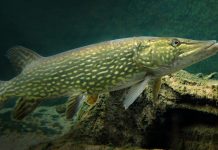In order to find and catch more fish, you need to understand where the high percentage areas exist in a body of water that they travel. A good fishing map will help you find all three important fish zones: sanctuaries, travel routes, and feeding areas that are influenced by light, weather and food sources.

Sanctuaries
Fish spend most of their time in sanctuaries holed up where they are safe and comfortable, which often means there is adequate oxygen and an acceptable water temperature. In most cases, fish sanctuaries are the deepest pockets in a defined area that include access to food. All species of fish move from their sanctuaries to areas where they actively feed as hunger triggers their movement. Once their stomachs are full, they return to their sanctuaries.
Travel Routes
A theory states that weather and light activate fish movement. Low pressure storm fronts stimulate fish to move and feed. When the front passes and the weather clears, fish are less active and are found tight to cover. A principle of fish behavior is that all movement takes place along defined routes. Fish orient themselves with certain features of their underwater environment and travel set pathways between feeding areas and holding areas (sanctuaries).
Feeding Areas
Game fish will often move from deep water into feeding grounds in search of minnows or forage. When looking for game fish, an area with shallow weed beds or fish attractors will hold minnows or forage. At the edge of the flat the water drops sharply, eventually to a hole (sanctuary) and an angler will be able to intercept game fish as they move from their sanctuaries into feeding areas in low light conditions.
Next time you look at a fishing map pay close attention to this relationship between water depth and shallow cover to discover these travel routes, or take advantage of the Fishing Hot Spots® on Fishidy’s maps to uncover these areas for you that will lead to more successful days on the water.





I fish mainly at piers and once in a while, when I’m lucky, I get to ride in a friend’s boat. The article above is definitely a good way to understand how fish travel and what their path is. Knowing this, I’m assuming one can accurately track fishing spots. Get Bent Galveston
Understanding the map is one of the best and basic rules in fishing, I have been fishing for years now and I always make to the point to study the tour first before setting up my gear and go and railing in an instant. Your post is very well written and you can easily understand the point. Looking forward to read more of your articles.